
eXtensions - Tuesday 24 September 2024
By Graham K. Rogers

The iPhone 16 began to arrive in the hands of its new owners on Friday and there were crowds in some locations. Despite one analyst's usual negativity, sales of the device appear to be good. The Osborne Effect. I am apparently not alone with my Photos app disappointment - who decides on these changes? Comments on my changes to external disks. Apple increases iCloud fees.
Friday was release day for the iPhone 16 in several countries, including Thailand. The Thai newspaper The Standard had a report on the morning release in Bangkok, with a photograph showing hundreds of people outside the Central World Apple Store that opened at the unusually early tme of 8am. Good publicity of course, but I really don't understand this having used online ordering since it was available here. That normally means the device is in my hands on the day of release. This week I ordered a couple of bands (new iPhone planned for next year). DHL phoned just after 0900 on Friday and confirmed my details. The delivery was made to the condo while I was at work. This is all much more convenient and civilized.
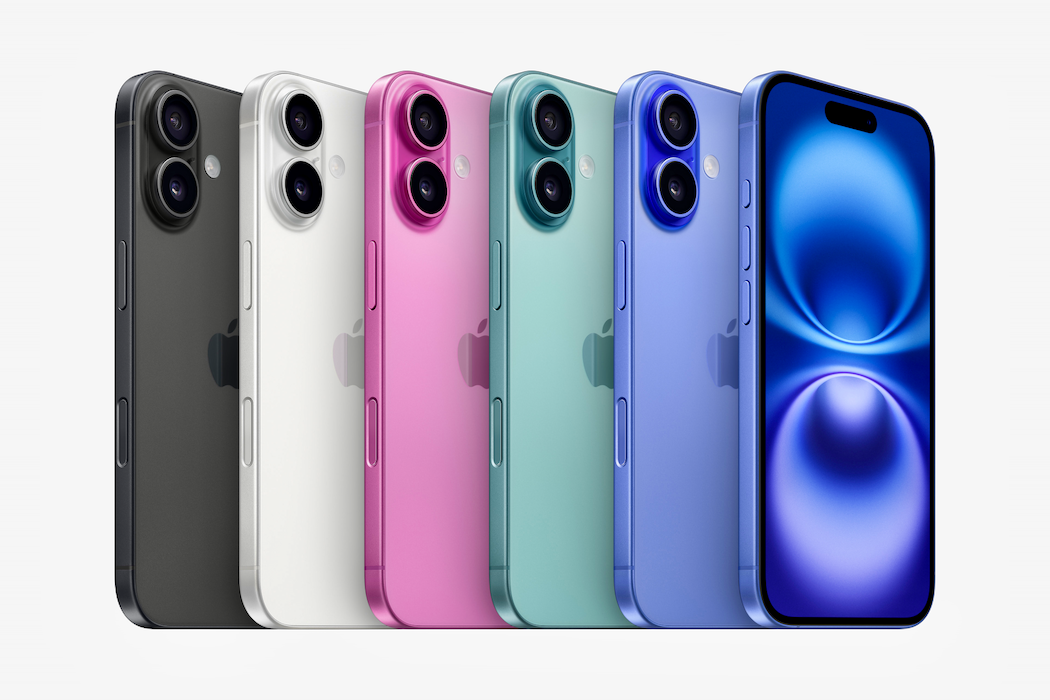
Last week I rolled my eyes when I saw that
Ming-Chi Kuo had released his latest supply chain survey and pre-order results and immediately announced that sales of the iPhone 16 would be lower than the iPhone 15. The crowds at both Apple Stores on Friday would suggest that local users were keen to take delivery of these. I fully expect however that most would have had a home delivery rather than run down to the Central World area; or they could have pre-ordered at one of the many (franchise) iStudio outlets, as well as the main phone companies here (AIS, True-DTAC, at al).
These were all busy on Saturday in central Bangkok. In the USA, Jim Cramer interviewed Mike Sievert, President and CEO of T-Mobile and mentioned the claims of Ming-Chi Kuo. Sievert dismissed them out of hand. The whole interview is worth listening to as Sievert clearly has a good knowledge of the technology that his company uses and they covered several interesting, but related topics. A related report by Alex Eule (Barron's) carried by MacDaily News noted that Apple is underrated, adding that "Wall Street talks down new iPhones and then rushes to catch up with the reality that consumers still love them. Somehow, the market's largest company remains one of its most underestimated."
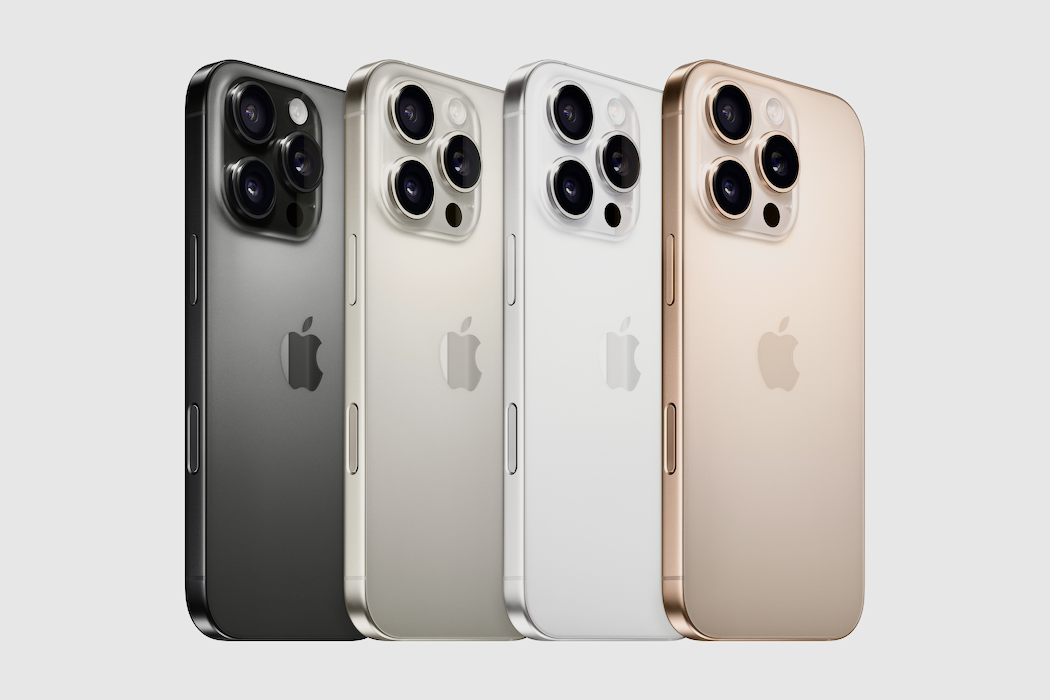
One of the events that changed Apple's approach to product releases was the downfall of the Osborne Computer Corporation. When I was in the USA in 1984-86 the department I was in owned one: a rather cumbersome affair, with 4 floppy drives, that allowed one of the staff members to carry it home and work there, although the tiny screen (5") seemed a little hard to deal with. Although the Osborne 1 was quite well-received, it had a number of shortcomings that the company said would be fixed as better versions were on the way (Luke Dormehl, Cult of Mac). As a result, customers stopped buying the Osborne 1 computer.
Apple (Steve Jobs) disliked the "it will do" approach but of all things that were learned from the bankruptcy - 41 years ago last week - was not to tell the customers what was coming next, and Apple has consistently played its cards close to its chest, much to the frustration of the tech pundits. It is fairly easy these days to judge when a new product is on the way. With the iPhone, there is an annual cycle with WWDC in June and the iPhone in September in time for end of year sales. With Macs, the lack of availability, or the bargain prices that some models are sold at (mainly in the USA) are good indications that there is something on the horizon. What is coming, and the specifications, are usually speculation, except for those with a direct line to someone at Apple. Note the iPad Pro release in April this year, however, when everyone expected the M3 chip, Apple pulled the M4 iPad Pro out if its hat with only a single prediction of this a couple of days before the announcement.
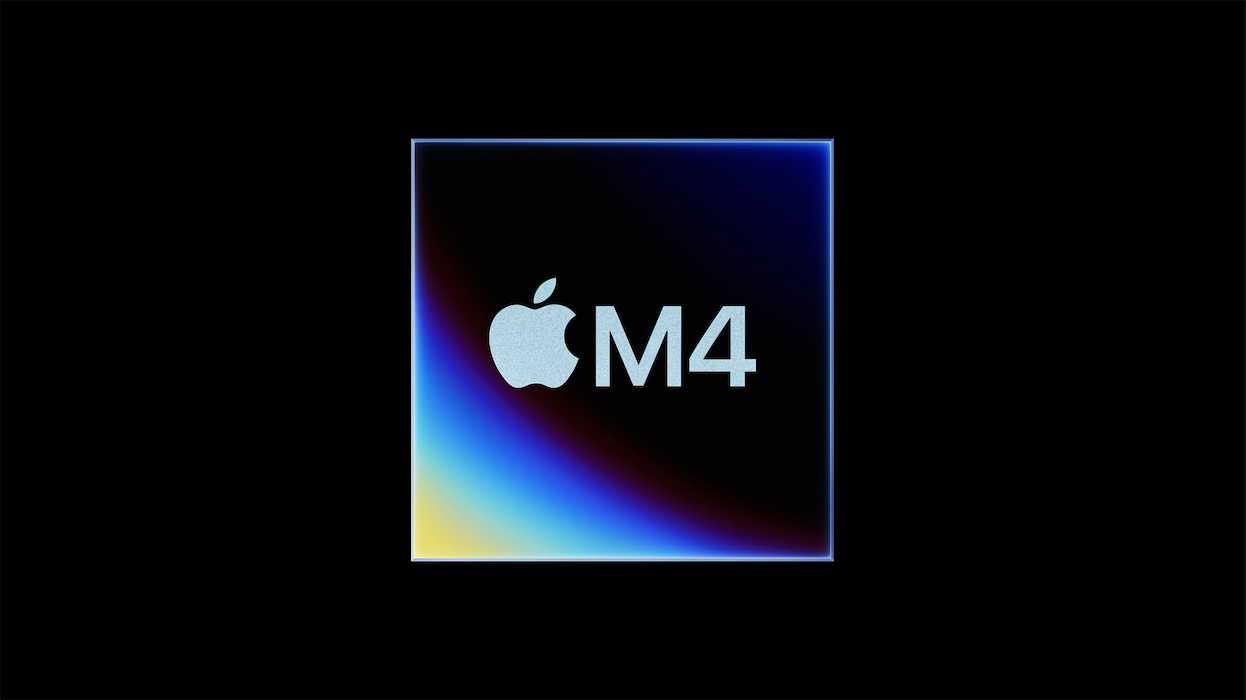
There are likely to be more M4 chips, in Macs of course, coming soon, with October viewed as the most likely. Code in Sequoia has apparently revealed that the Mac mini will be available with 5 USB-C ports, which would suit me perfectly. Joe Rossignol (MacRumors) notes that the next event is also expected to see "other M4 Macs and a new iPad mini." Surely the iMacs are overdue as well?
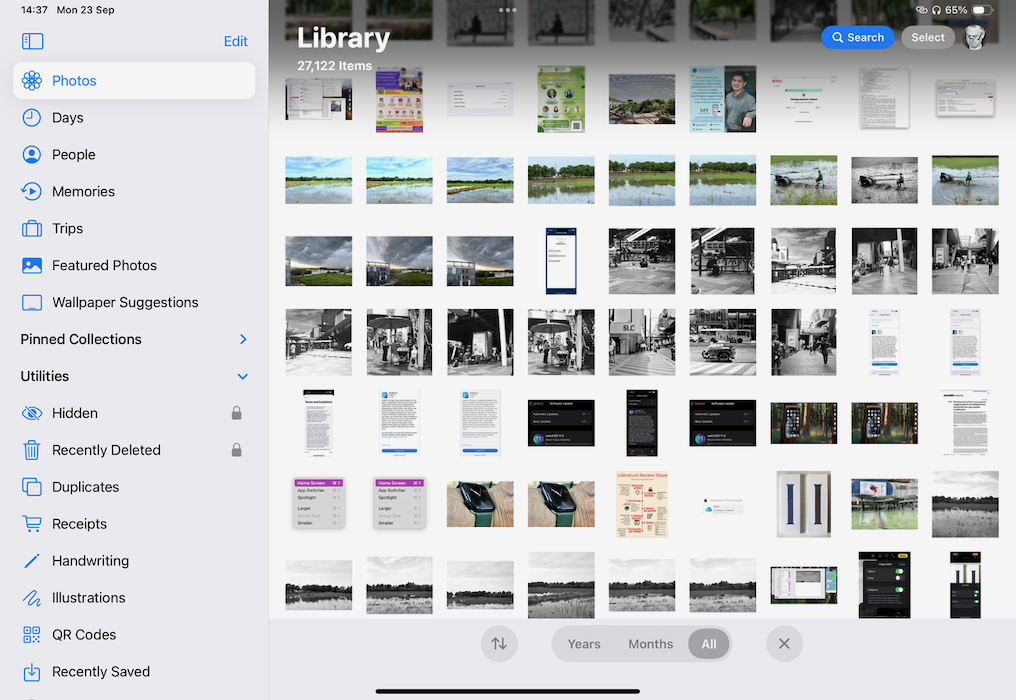
I was pleased to see that I was not the only one unhappy with the changes to Photos as David Snow (Cult of Mac) outlines some fairly strong comments, particularly on Social media. I cleared out the galleries on the iPad Pro because there is already an index panel giving me access to the albums and other photo groups. On the iPhone I trimmed down the galleries to show only albums and a section of contents named, Utilities. Another annoyance for me on the iPad is the size of the thumbnails (finger-nails?). I have to resize these whenever I want to examine them. As I wrote last time, Who comes up with these changes and why? This mirrors a comment in the Snow article: "Whoever designed the new iOS 18 photos app needs to be fired".
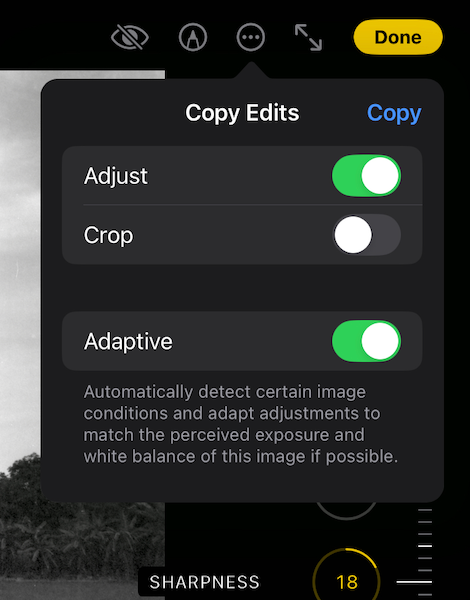 However, there are other changes in Photos that are less obvious, such as in the editing tools. There is still no Repair tool on iOS or iPadOS, which means I need to switch to either another app on my devices, or to the Mac, if I need to clean up the image. There is often dust or other unwanted artifacts on the negatives I scan for example. Before I had the sensor cleaned by Nikon, the DSLR also showed spots on the images that needed cleaning up. On the iPad Pro I usually open Photomator for this (and other tools).
However, there are other changes in Photos that are less obvious, such as in the editing tools. There is still no Repair tool on iOS or iPadOS, which means I need to switch to either another app on my devices, or to the Mac, if I need to clean up the image. There is often dust or other unwanted artifacts on the negatives I scan for example. Before I had the sensor cleaned by Nikon, the DSLR also showed spots on the images that needed cleaning up. On the iPad Pro I usually open Photomator for this (and other tools).
If I am editing a group of negatives (or other images), that were taken at the same time (e.g. similar light conditions) a quick way to start the process is to copy the edits and paste them onto another image (which may need further adjustment, or not). The recent updates have changed that from just the Adjustments to include Crop and Adaptive edits.
I exclude Crop as image to image, I may hold the camera slightly differently, and there may be other ways I want to crop a specific image. That copy and paste Crop feature could be useful in a studio setting, or in other ways. I am still searching for other changes to the editing tools. I have not found any changes to Photos on the Mac since the update to Sequoia. That is good in a way, but this still lacks the strength of the long-lost Aperture and it is long overdue for Apple to release a Pro photo-editing application again (for the iPad Pro as well as the Mac). There are alternatives to Photos, but for many, Adobe is not the answer.
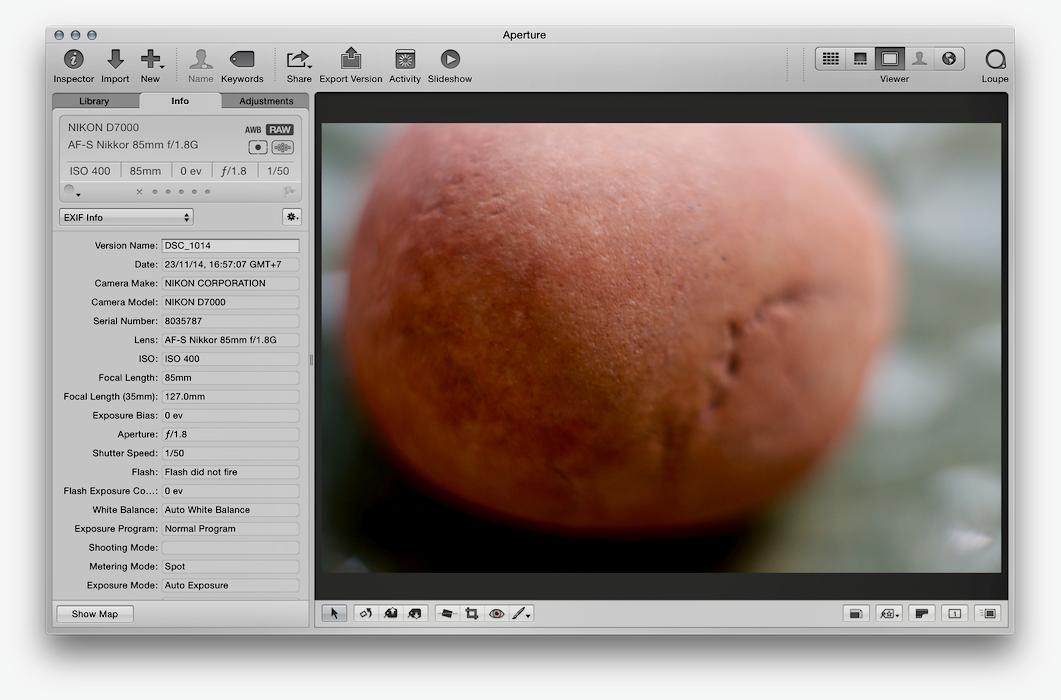
I was not sure if I had changed how I use the Apple Watch 9, but since the watchOS update last week, the battery use increased significantly. Instead of around 25% over 24 hours, I saw around 50-60% or more during the course of a working day. It may in part be an optimization that occurs after an update. I wondered why the device was only charging up to 80% each day, which is not what I want. After an online search, however, I found that that is apparently due to optimized charging which can be turned off, although there are dire warnings about battery life. That is in Settings on the Watch; scroll down to Battery. For the first time since I have had an Apple Watch (back to the first one), I was having to charge at the office as well. That has now been fixed.
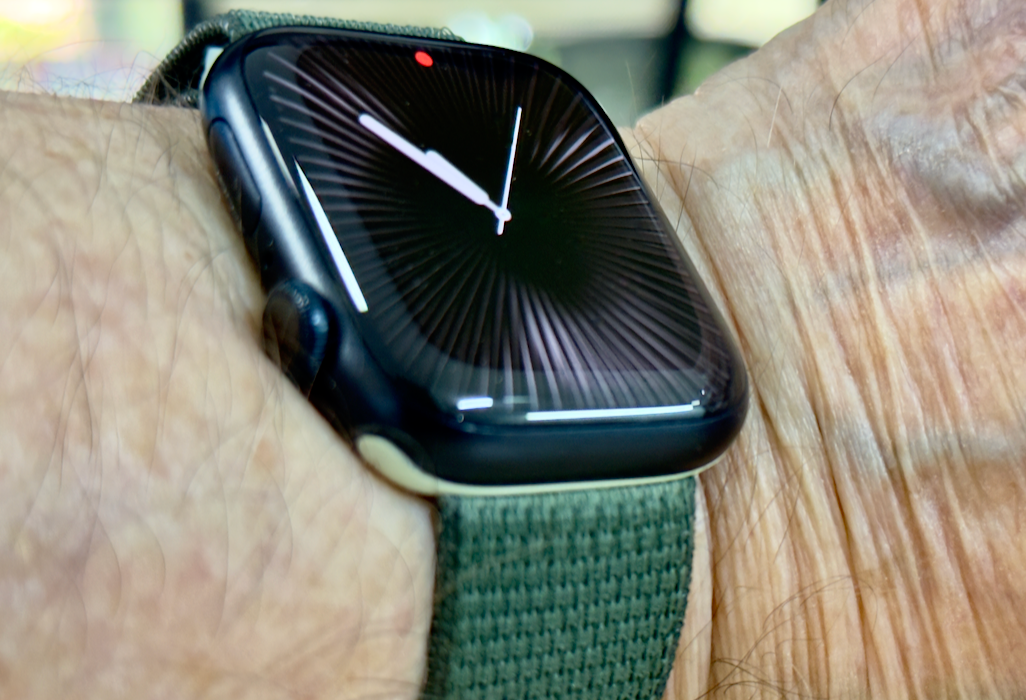
Following my switch to a Seagate 5TB hard disk for storing images at the office, I took the now-redundant disk home. As this has a USB-C port, it could replace an older disk that had a micro-B USB port, used for Time Machine backups. I use 4 disks for Time Machine, with one at work. That is swapped regularly with a disk from home, so that a fairly up-to-date backup is always available off-site, in case there were a disaster (e.g. fire).
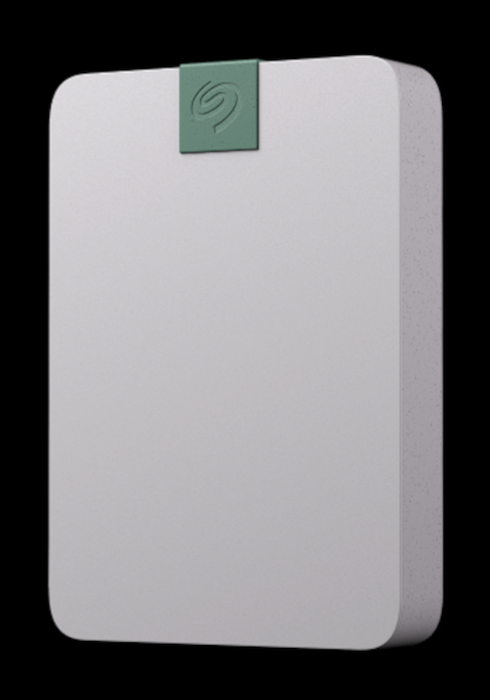
|
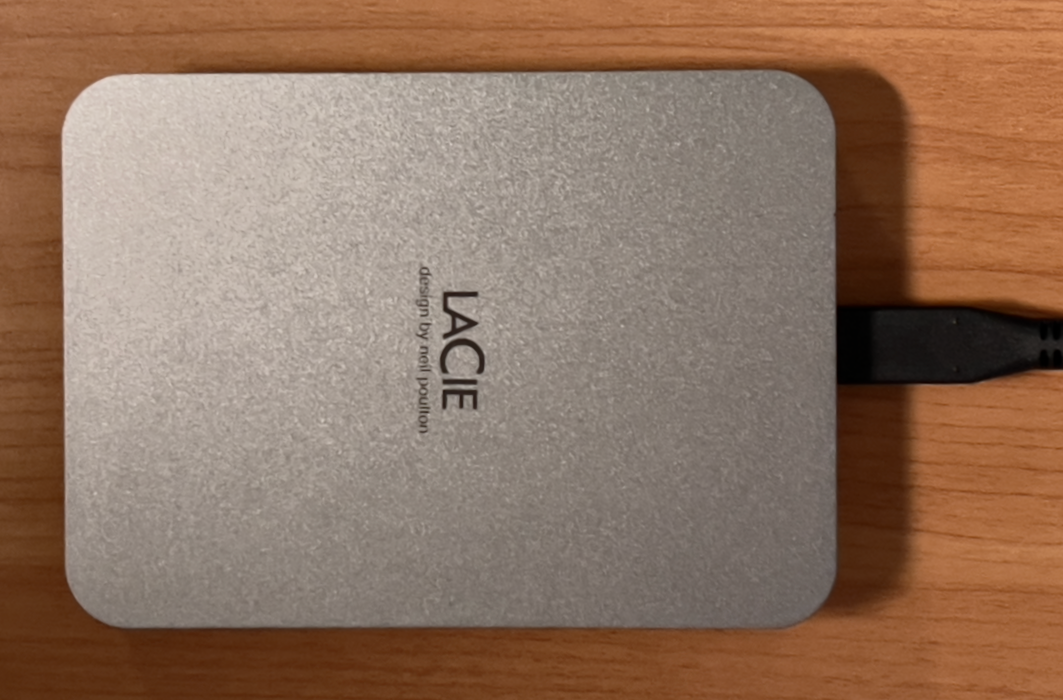
|
One of the Time Machine disks is a 5TB LaCie disk that I had partitioned with 2TB for Time Machine and 3TB for data. That data partition held another backup of original image files. Before I could use the 2TB LaCie disk for Time Machine I made sure that all the images were transferred to the Data Partition of the 5TB LaCie disk. I have several LaCie disks as they are well-designed and fairly easy to find here.
Using an OWC Thunderbolt 4 hub and the T3 port of the MacBook Pro, I started copying the files across to the data partition. Once the disk was connected to the Mac, the Time Machine partition was recognized and backing up began. This is usually one of the faster disks, but with the other partition hard at work with the data transfers, it slowed considerably. To add to the load, I was also scanning a dozen negatives while the transfers were taking place.
As a bonus, although both disks (and the Mac) lack read/write speeds that equal Thunderbolt 4 capabilities the data transfers were faster than I had experienced earlier in the week when transferring images to the disk at the office. The USB-C 3.2 cables (and the Onten hub) had limited speeds somewhat. One folder of images took some 13 hours to copy from one disk to the other. At home, the same folder, which was being copied at the same time as others, showed a time of 3 hours.
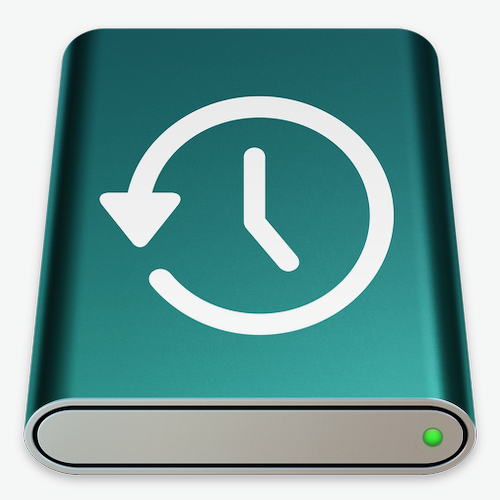 With the data finally backed up twice - at the office and at home - I could safely format the disk. This time I used AFPS (encrypted), then added it to the list of Time Machine disks in System Settings. I was asked to provide a password for the encrypted backups and wrote this down somewhere safe. Forgetting the password would make the disk unavailable for recovery. Once done, the first backup run is fairly slow, depending on the amount of data. The 2TB disk took a little over an hour. I let it run again for a second backup then once more before taking it to the office.
With the data finally backed up twice - at the office and at home - I could safely format the disk. This time I used AFPS (encrypted), then added it to the list of Time Machine disks in System Settings. I was asked to provide a password for the encrypted backups and wrote this down somewhere safe. Forgetting the password would make the disk unavailable for recovery. Once done, the first backup run is fairly slow, depending on the amount of data. The 2TB disk took a little over an hour. I let it run again for a second backup then once more before taking it to the office.
The disk it replaced is now at home and I am unsure what to do with it. By removing it as a Time Machine disk, almost all the accessories I regularly link to the Mac use USB-C, with a couple of important exceptions that all use the OWC hub: the DSLR camera, that uses USB micro B (and an adapter cable); a high quality microphone (USB-A via the Hub); a monitor (HDMI and the hub); the Canon flatbed scanner (USB Type B, via an adapter and the hub). With the adapter cable, I find it just as easy to import any images from the camera to the iPad Pro as they are soon synchronized to my other devices via iCloud. Some of those older ports, cables and the devices they connect to are still used regularly and it will take a while before I replace those.
I was looking for Thunderbolt 4 cables in Bangkok city center at the weekend, but some assistants had no idea what I was talking about. iStudio (Apple franchise) had some: 1m, 2490 baht; 1.8m, 4390 baht; 3m, 5390 baht (also online). I was slightly taken aback by the number of devices, and cables, that still use USB A ports and connectors. It will take some people a long time to move on from these.
At the end of last month I commented on the Negroponte Switch and how TV transmission methods are changing the way we view, and the way some TV companies are experiencing lower revenues extensions. The Guardian (Dan Milmo) notes that "Online platforms have overtaken TV channels as the most popular sources for news in the UK, according to figures described as a 'generational shift' in viewing habits." This does not really reflect the use of channels like Netflix and Apple TV, but more how social networking sources are becoming the main source of information for some users. As Fiona Bruce comments in the article, this is "worrying".
I am all for the complacent TV companies losing their grip, particularly as the newer companies have been producing some excellent television (and movies) in the last few years. Having YouTube, Facebook or X as major sources of information is less satisfactory. I used to complain to my family that with their limited news sources (often BBC only) while I read online information from several countries daily - often giving me news about the UK that my family had not seen - I was better served. I am not sure they ever understood that. In his interview with Jim Cramer (see above), Mike Seivert also has some interesting things to say about the way users are switching from cable to T-Mobile's new offerings.

However, Karl Bode (TechDirt) is not sure that TV executives have learned the lessons of history. Initially they were insistent that cord-cutting was fiction, until they had lost many users to streaming. There are however large areas of the USA that have no alternatives, which helps them maintain the fiction. Now however, these execs are beginning to move towards streaming, but the same mistakes of "relentless price hikes and incompetence" are still being made.
I had a note this week from Apple about my iCloud subscription. Because I have a lot of photographs, I opt for the 2TB space and that is going up from 349 baht per month to 399 baht. Not much, but multiply that by thousands of users and it can be seen what a cash cow this is. As well as the email, there was notification in the Settings app (with a Dismiss link). I cleared that from the handheld devices, but it persisted with the MacBook Pro at home for several days, but not the Mac mini in my office.

Graham K. Rogers teaches at the Faculty of Engineering, Mahidol University in Thailand. He wrote in the Bangkok Post, Database supplement on IT subjects. For the last seven years of Database he wrote a column on Apple and Macs. After 3 years writing a column in the Life supplement, he is now no longer associated with the Bangkok Post. He can be followed on X (@extensions_th). The RSS feed for the articles is http://www.extensions.in.th/ext_link.xml - copy and paste into your feed reader.

For further information, e-mail to
Back to
eXtensions
Back to
Home Page